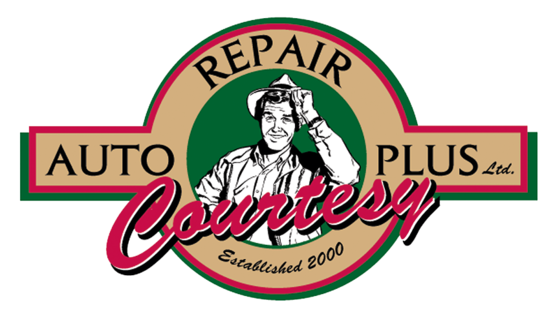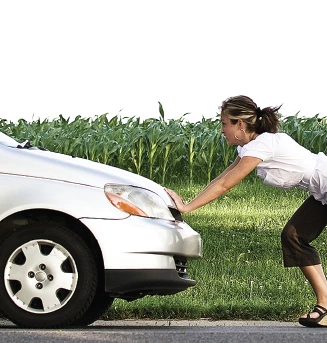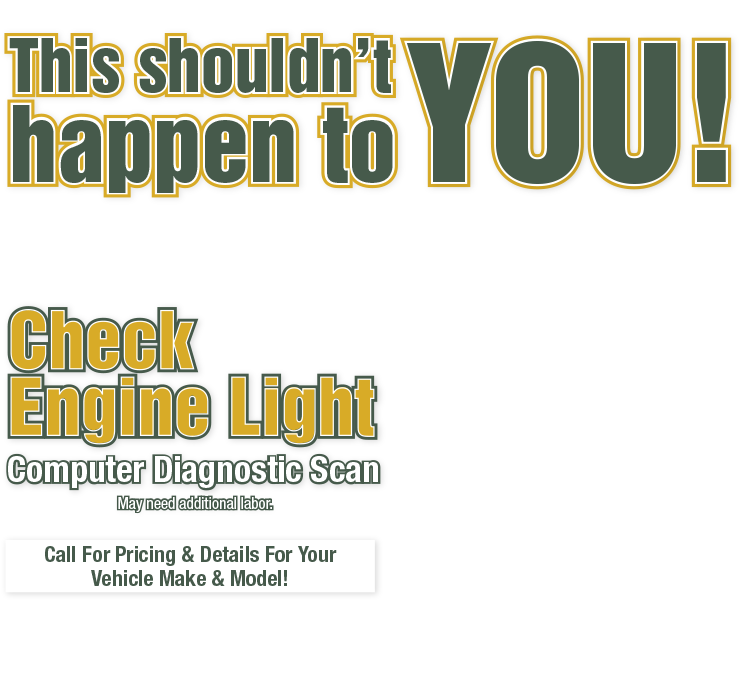When Do My Shocks Need to Be Replaced?
May 17, 2020
A good suspension system gives a vehicle a smooth, even ride while providing Tiffin drivers with good handling and control. But like any system on your vehicle, parts of the suspension system can wear out, leading to a lower ride quality and safety concerns. So it's a good idea for drivers in Tiffin to remember their suspension system in their schedule of preventive maintenance. Springs do most of the work of the suspension system. The most common types of springs are coil and leaf, but air springs and torsion bars are becoming more common. The body of the vehicle is “suspended” by the springs.
If springs were the only working component in your suspension system, however, you'd spend your travel time bouncing up and down like a bobblehead. That's where your shocks come in. They keep the rebound, or bounciness, of the springs under control. Shocks also keep your tires on the road, which keeps the driver in control of the vehicle. Some vehicles have struts in their suspension system. Struts are a compact combination of springs and shocks. They do the same job but in a single package.
Shocks wear out gradually, so it can be difficult for Tiffin drivers to notice when they need to be replaced. There's no definitive point when a vehicle's ride goes from "smooth and controlled" to "a bit imprecise." To check if your shocks or struts are worn, you should first do a visual inspection on them. If they are leaking fluid, they need to be replaced.
There are other less obvious signs that your suspension system needs attention. For example, an uneven, cupping wear on your tires may indicate that your shocks are worn. If your vehicle feels “floaty” when you turn, or, in other words, you don't feel that you have full control of the vehicle, you should check your shocks. Also, if the front end of your vehicle dips noticeably when you stop, it's time for new shocks.
Your owner's manual gives recommendations on how often the shocks should be checked, usually between 15,000 and 30,000 miles (24,000-50,000 km). If one of your shocks does need to be replaced, you should replace all four. This will keep your suspension even and ensure good handling of your vehicle. If you carry heavy loads, tow a trailer or drive on uneven Tiffin area terrain, you might also consider upgrading to a heavy-duty shock.
Regular shocks contain hydraulic fluid. The fluid helps them absorb the bumps or “shocks” of the road so the impact doesn't transfer to the vehicle's body. Premium shocks are filled with compressed nitrogen gas, which costs more but does a better job of controlling body motions. Regular shocks can develop air bubbles that reduce their effectiveness; the premium shocks don't have this problem. So if you want higher handling performance, if you drive off-road around Ohio or if you just want added comfort, you should consider upgrading to premium shocks or struts.
Replacing struts can put your vehicle out of alignment, so an alignment check should always follow this type of repair. Talk to your service advisor at Courtesy Auto Repair Plus in Tiffin for more information.
Courtesy Auto Repair Plus
967 Bon Air Ave
Tiffin, Ohio 44883
419-443-0797
http://www.courtesyautorepairplus.com
More articles from Courtesy Auto Repair Plus

Don?t Skip Out on These! (Vehicle Maintenance Items You Should Never Postpone)
December 14, 2025
Maybe that little sticker on your windshield is giving you the reminder that its time for your vehicle to have an oil change. Youve thought, Aw, I can skip this one and save myself a little money. When it comes to things you should never ignore on your vehicle, timely oil changes are number one... More

Why Maintaining Your Windshield Wipers and Washers Matters (Windshield Wiper and Washer Inspection)
December 7, 2025
What do mud, bird droppings and frost all have in common? When theyre covering your windshield, they can temporarily obscure your view of the road, leaving you driving blind. And when you cant see the road clearly ahead of you, it can be really scary. Thats one of the reasons its important to m... More

A Clean Start (Battery Cleaning)
November 30, 2025
You may be fanatical about keeping the outside of your vehicle clean. But what about what's under the hood? Have you ever thought about how dirt and grime may be affecting your engine's components? One of the most important parts under your hood to keep clean is your vehicle's battery. With a d... More







